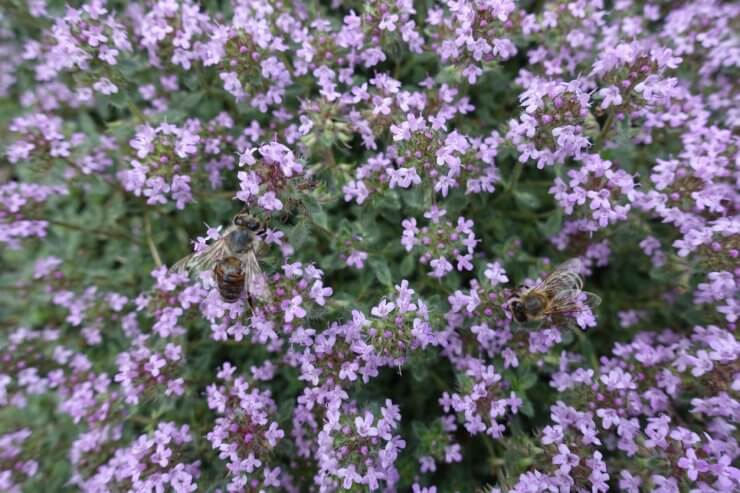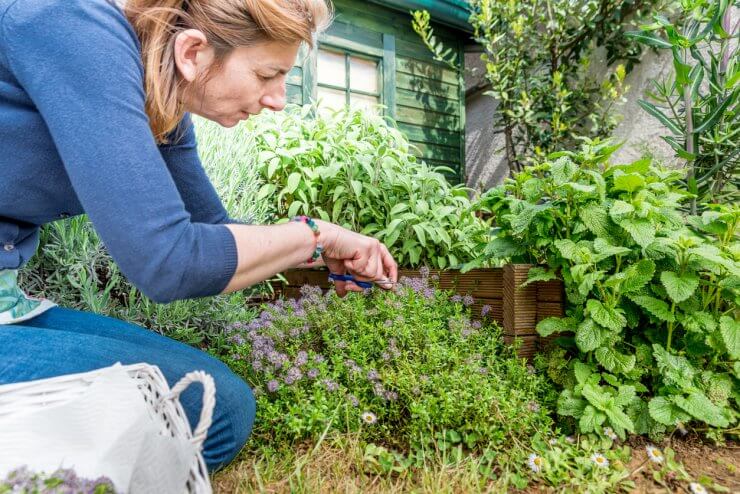
“Mother of Thyme” variety
Before choosing your thyme plants, take a moment to consider how you will use them and the scents, flavors, colors, and types you prefer. Thyme flowers, for example, can be yellow, white, or purple. And leaves may be green, gray, or variegated. These are all important choices, however, in addition to culinary and ornamental types, the main categories of thyme are:
- Prostrate thyme spreads low across the ground, growing 1 to 6 inches high. Creeper varieties include Leprechaun, Annie Hall, and Highland Cream.
- Upright, or mounding, thyme has a woody base and grows 12 to 18 inches high. Upright varieties include including Common, Lemon, and Silver.

Harvesting thyme
Thyme Harvesting Bonus Tips: Thyme plants offer their peak flavor when harvested just before they bloom in summer. But you can harvest them any time from mid-spring through fall. Cut or pinch—don’t pull—the stems. For cooking, remove the leaves by gliding your thumb and forefinger down the stem. You can also chop the stems, but if they are woody, use only the leaves. Fresh-cut thyme can be stored, unwashed, in a plastic bag in the refrigerator for up to two weeks. You can dry thyme by hanging bunches upside down in a warm, dry room for about three weeks, or more quickly in a dehydrator. Crumble the dried thyme, remove any woody stems, and keep the thyme in a glass jar out of the sunlight.
Do you grow different varieties of thyme? Which ones do you grow? Please tell us how you use your thyme harvest—and what you do with all the excess thyme. Do you dry it? Or do you give it away to family, friends, and neighbors to enjoy?


 Previous
Previous

